
For the week ending Sept. 20, corn, soybean and wheat export sales all posted healthy totals, which helped futures prices gain a little traction Thursday morning.
“The corn numbers were especially encouraging and suggest we may be seeing a role reversal this year,” says Farm Futures senior grain market analyst Bryce Knorr.
Corn saw 67.4 million bushels in old crop sales last week, minus a small reduction of 400,000 bushels of new crop sales, for a total of 67.1 million bushels. That was steadily higher than the prior week’s total of 54.9 million bushels and well ahead of the average trade guess of 43.3 million bushels. The weekly rate needed to match USDA forecasts eased to 37.1 million bushels.
“Corn is flying off the shelves because shippers will be able to move it sooner than normal,” Knorr says. “That could help strengthen corn basis after harvest, while soybeans take longer to firm in the cash market.”
Corn export shipments of 53.5 million bushels last week also lowered the weekly rate needed to meet USDA forecasts, now at 44.5 million bushels. So far in the 2018/19 marketing year, Mexico leads all destinations for U.S. corn export commitments, with 31% of the total. Other significant destinations include unknown destinations (17%), Japan (15%), South Korea (8%) and Taiwan (4%).
Soybean export sales last week totaled 32.0 million bushels and another 100,000 in new crop sales, for a total of 32.1 million bushels. That total landed slightly behind the prior week’s total of 36.7 million bushels but slightly bested trade estimates of 29.4 million bushels. Last week’s performance also lowered the weekly rate needed to match USDA forecasts to 25.5 million bushels.
Soybean export shipments of 30.1 million bushels pushed the weekly rate needed to match USDA forecasts higher, to 40.0 million bushels. For the 2018/19 marketing year, unknown destinations represent the commanding leader so far for U.S. soybean commitments, with 42% of the total. Other top destinations include Mexico (12%), China (7%), Argentina (5%) and the European Union (4%).
“Normally, soybeans fill the export pipeline early,” Knorr says. “Buyers book them quickly, knowing that another harvest will hit in a few months from South America. But lack of soybean exports to China could drag out the selling season for soybeans, making year-to-year comparisons on the pace of exports difficult to judge. Total soybean commitments are down 7% from last year and 18% from the five-year average.”
Wheat export sales reached 24.1 million bushels last week, moving moderately ahead of the prior week’s total of 17.2 million bushels and ahead of trade estimates of 13.8 million bushels. The weekly rate needed to reach USDA forecasts is now 17.3 million bushels.
Wheat export shipments of 17.9 million bushels keep the weekly rate needed to match USDA forecasts at a more aggressive 22.1 million bushels, meantime. So far in the 2018/19 marketing year, the Philippines is the No. 1 destination for U.S. wheat export commitments, accounting for 16% of the total. Other top destinations include Japan (12%), Mexico (12%), South Korea (8%) and unknown destinations (6%).
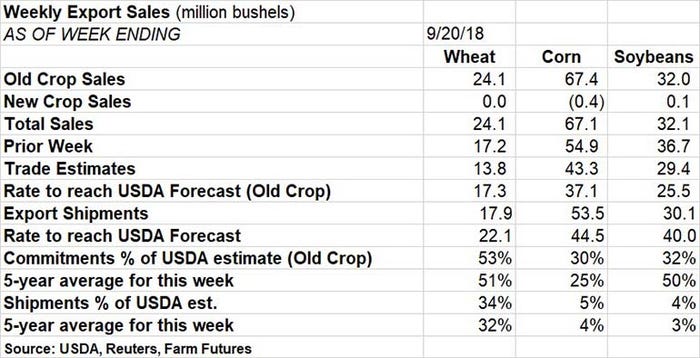
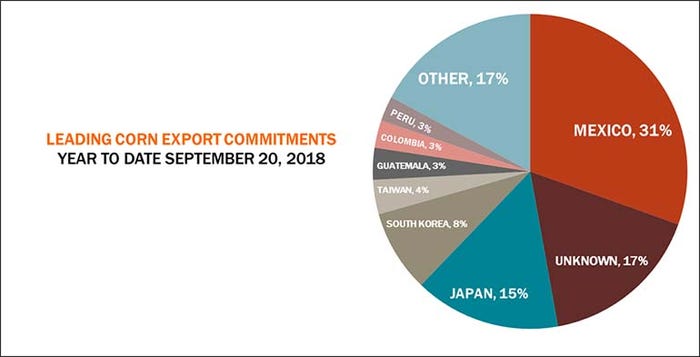
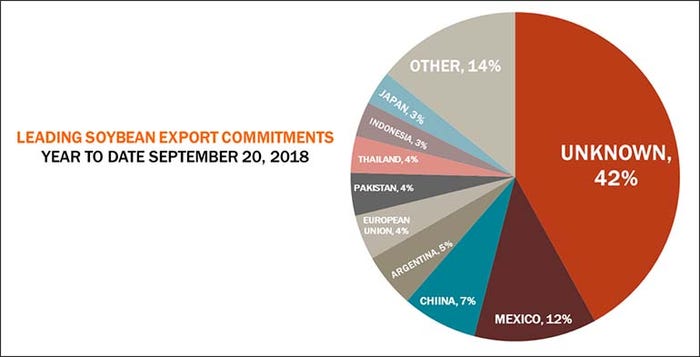
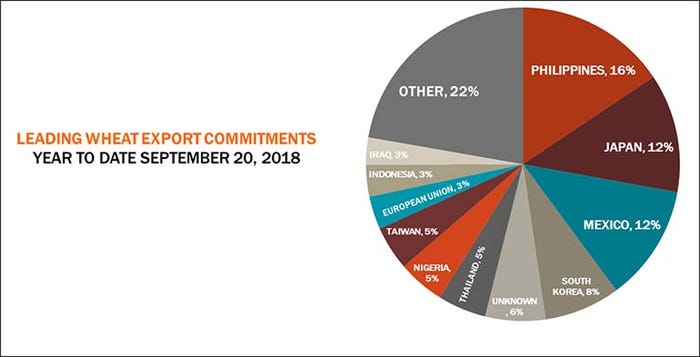
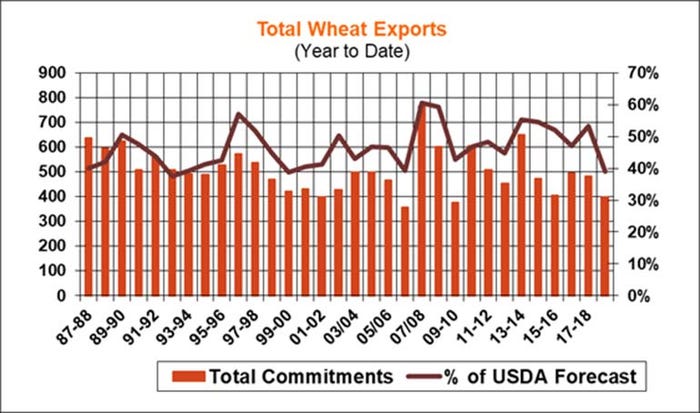

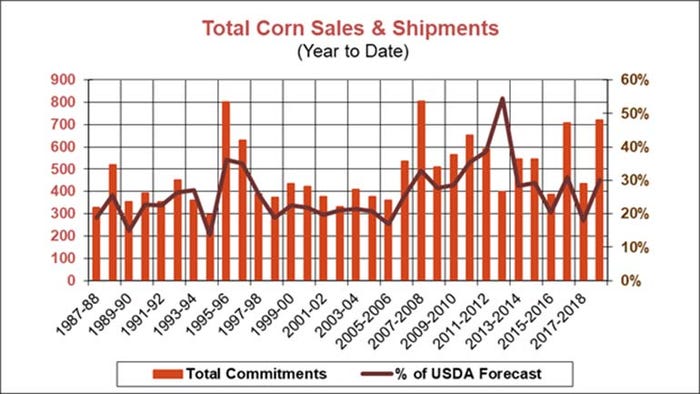
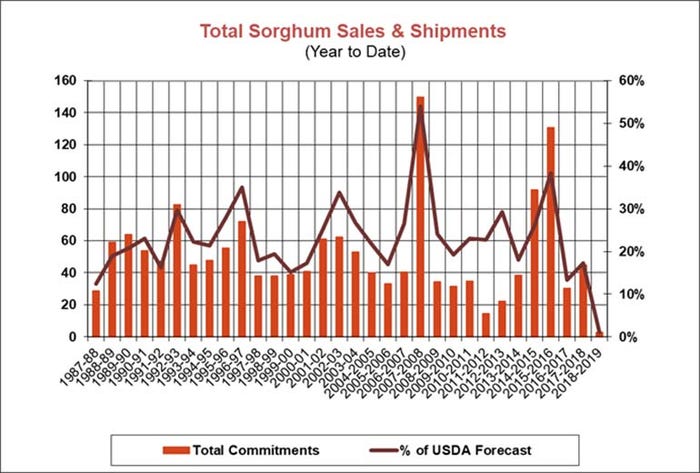
About the Author(s)
You May Also Like






